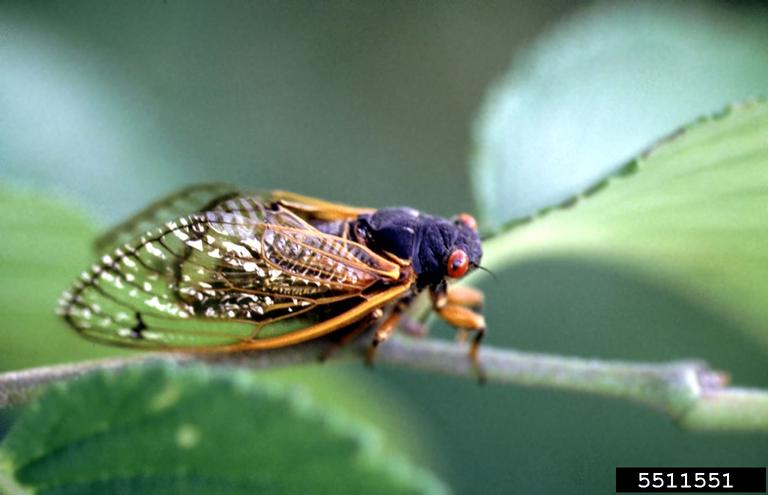 Figure 1. Brood X periodical cicada.
Figure 1. Brood X periodical cicada.
Photo Credit: Ward Upham, Kansas State University, Bugwood.org
Periodical cicadas are native to the eastern United States and emerge once every 13 or 17 years – making them a rare sight to see! Maryland is home to three 17-year species – Magicicada septendecim, Magicicada cassini, and Magicicada septendecula. (Cicada Mania)
Periodical cicadas are grouped into broods based on their geographical region and year adults emerge. There are 15 broods of 17-year cicadas still in existence.
Brood X Emergence
 Figure 2. Mid-Atlantic Brood Map.
Figure 2. Mid-Atlantic Brood Map.
Photo Credit:
Cicadas.Info
The Brood X cicada emergence is the largest of all broods, with many billions emerging at the same time. Numbers vary from place to place.
Based on the last Brood X emergence in Maryland, they will likely appear in the following counties: Allegany, Anne Arundel, Baltimore, Carroll, Cecil, Frederick, eastern Garrett, Harford, Howard, Montgomery, Prince George’s, and Washington.
Brood X cicadas synchronously emerge in large numbers as part of a predator satiation strategy. By coordinating their emergence, the sheer number of cicadas will allow for many to be eaten by predators while some of the population survives to procreate. Cicada predators include some birds, reptiles, amphibians, mammals, and other insects. (Cicada Crew UMD)
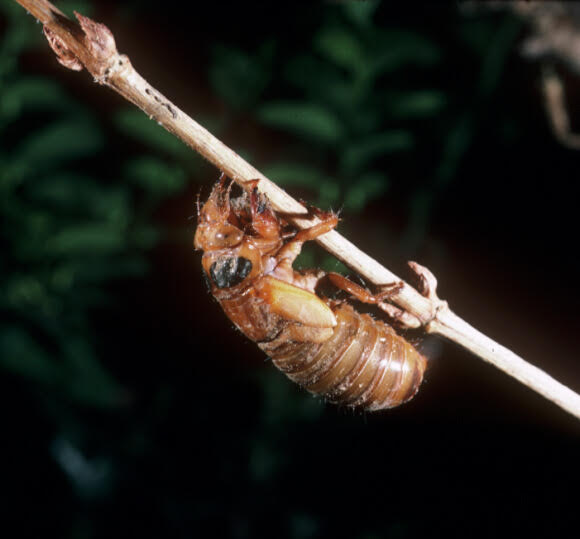
Figure 3. Brown periodical cicada nymph.
Photo credit: Maryland Department of Agriculture
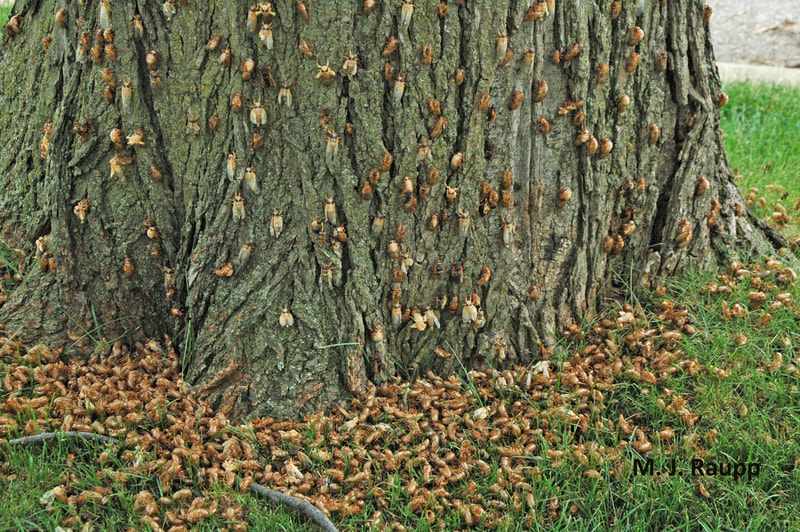
Figure 4. Previous Brood X emergence.
Photo Credit: Michael J. Raupp, Ph.D., Professor Emeritus of Entomology and Extension Specialist at the University of Maryland Extension
In Maryland, Brood X will begin to emerge in early May 2021 and will die off by the end of June. Adult periodical cicadas live for just a few weeks. During this short adult lifespan, they shed their nymphal exoskeletons, grow wings, fly, mate, lay eggs in trees, and then die.
The last Brood X emergence was in spring 2004 and after this year, we will not see them again until 2038.
Lifecycle
In early May, when soil temperatures reach around 64 degrees Fahrenheit, Brood X cicada nymphs will dig their way up from the soil where they have been living a couple of feet below the surface, feeding on sap from tree roots for the past 17 years. Where Brood X cicadas emerge, expect to see many exit holes in the ground, about 1/2-inch in diameter. (University of Maryland Extension)
Figure 5. Exit holes from a previous Brood X emergence. Photo Credit: Michael J. Raupp, Ph.D., Professor Emeritus of Entomology and Extension Specialist at the University of Maryland Extension
After emerging from the ground, they will climb up trees, weeds, and any other vertical surfaces. They then molt out of their brown exoskeletons, revealing fragile, crumpled white wings that slowly expand and darken over the next few hours, transforming into the well-known adult appearance. Periodical cicadas are lousy fliers and tend to bump into many objects. This makes them easy targets for predators.
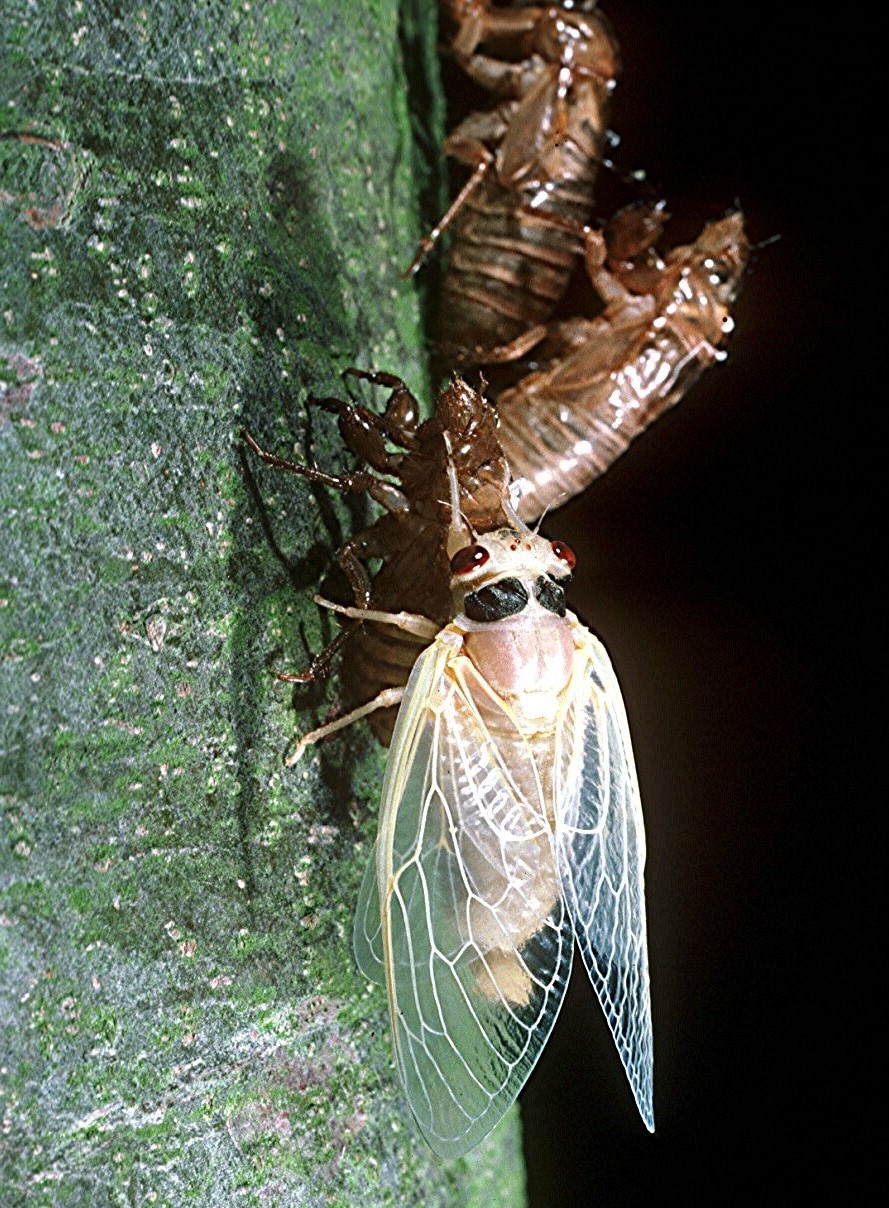
Figure 6. Newly molted adult with fragile wings fully expanded before exoskeleton hardens.
Photo Credit: Maryland Department of Agriculture
Once they are fully grown, male cicadas “sing” their mating call to attract females, making a loud chorus that can reach a volume as high as 105 decibels! (Cicada Crew) This is comparable to a lawn mower, leaf blower, or chainsaw. These sounds will usually last from late-May to late-June.
Approximately 10 days after emergence, cicadas mate, and females lay eggs in thin tree branches. They cut deep slits into the twigs and deposit tiny eggs in rows, around 2-3 inches long and about a pencil-width in diameter. A female can deposit anywhere from 400-600 eggs in her lifetime. Adult periodical cicadas will be active above ground for about six weeks.
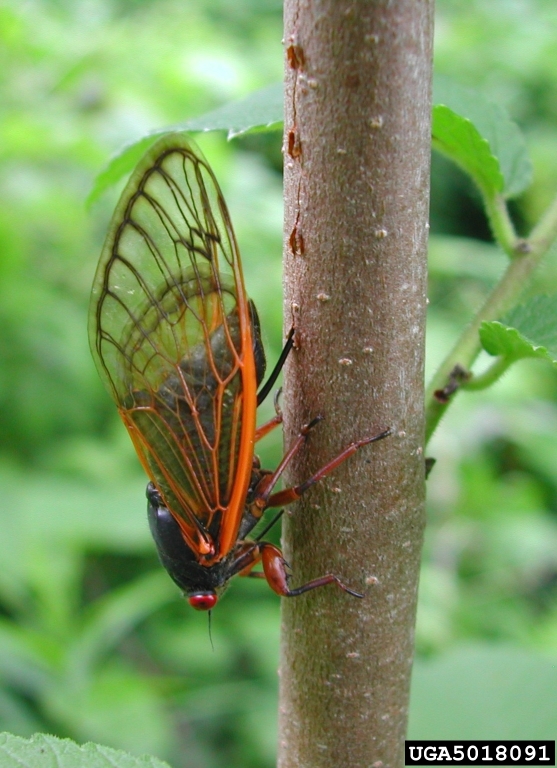 Figure 7. An adult female periodical cicada laying eggs in small rows. Photo Credit: Pennsylvania Department of Conservation and Natural Resources - Forestry, Bugwood.org
Figure 7. An adult female periodical cicada laying eggs in small rows. Photo Credit: Pennsylvania Department of Conservation and Natural Resources - Forestry, Bugwood.org
Figure 8. The next generation of eggs about to hatch in a twig. Photo Credit: Maryland Department of Agriculture
In late July-early August, about six weeks after the eggs are laid, they will hatch. Tiny white nymphs, that look similar to ants, fall from the trees and immediately begin to burrow underground where they will live again for another 17 years before the cycle repeats itself.
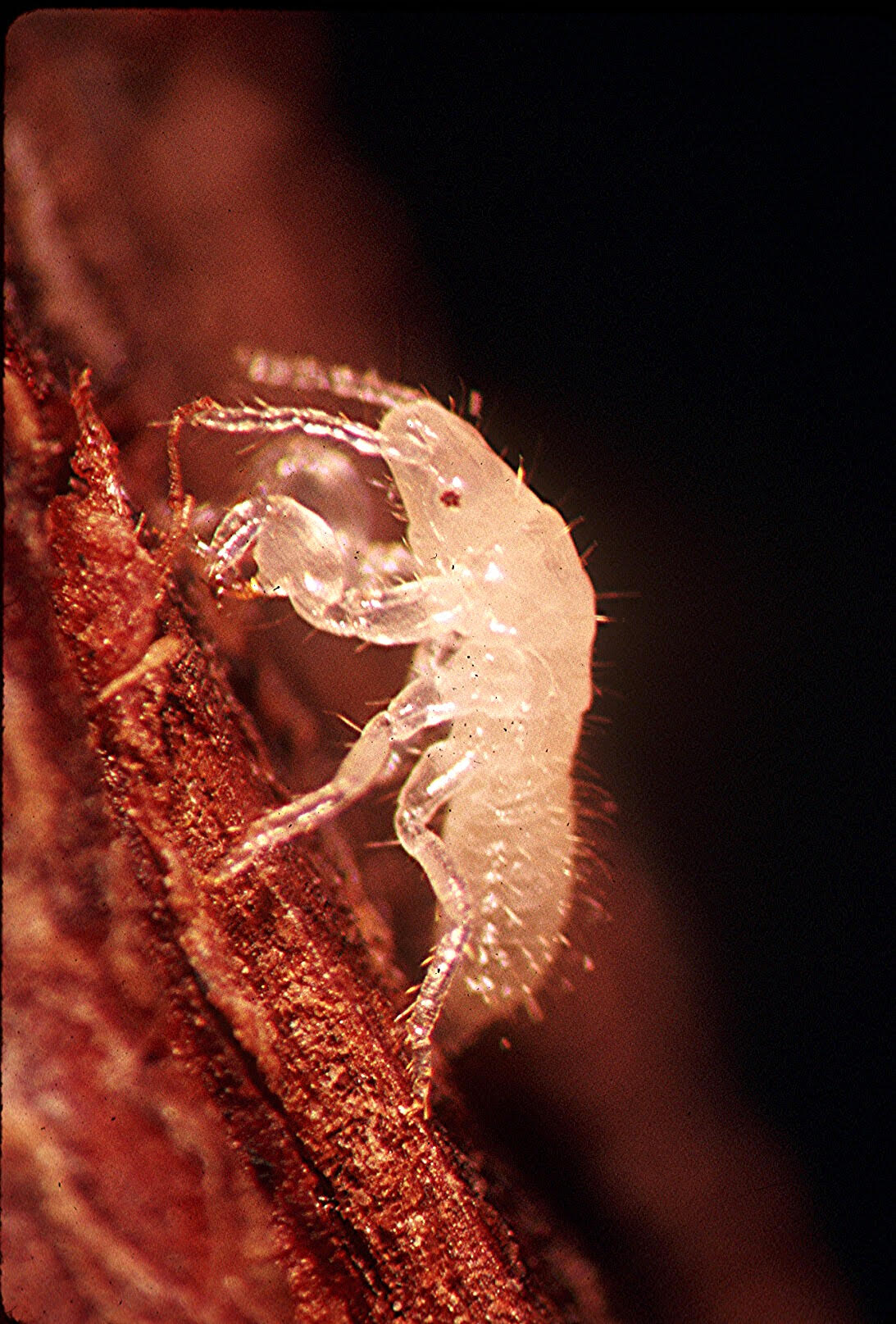 Figure 9.
Tiny white nymphs after hatching.
Figure 9.
Tiny white nymphs after hatching.
Photo Credit: Maryland Department of Agriculture
To see this lifecycle in action, watch “Return of the Cicadas” made by Motionkicker on Vimeo.
Appearance
The Brood X adult is 1-1.5 inches long and has a wingspan of 2-3 inches. Its body is mostly black with stunning red eyes and orange-veined transparent wings. The three species of 17-year periodical cicada found in Maryland differ slightly in appearance, size, and sound.
Watch this Cicada Mania video to see and hear the difference among Magicicada species.
Periodical cicadas are commonly confused with annual cicadas. Most annual cicadas are larger with silver underbellies, green and black bodies, and green-veined clear wings. The annual cicadas also emerge later, appearing from July through September.
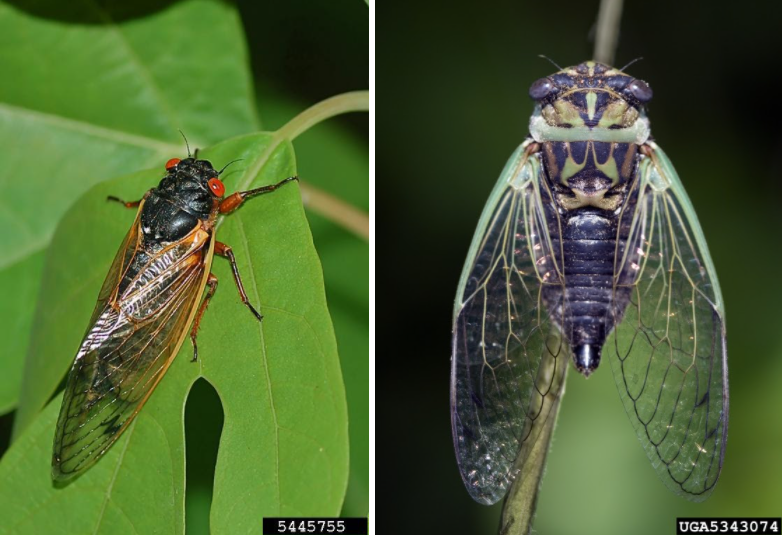
Figure 10. Periodical cicada. Photo Credit: Jon Yuschock, Bugwood.org (left)
Figure 11. Annual cicada. Photo Credit: David Cappaert, Bugwood.org (right)
Are they harmful to...
Figure 12. Adult Brood X cicada sitting on a hand.
Photo Credit: Maryland Department of Agriculture